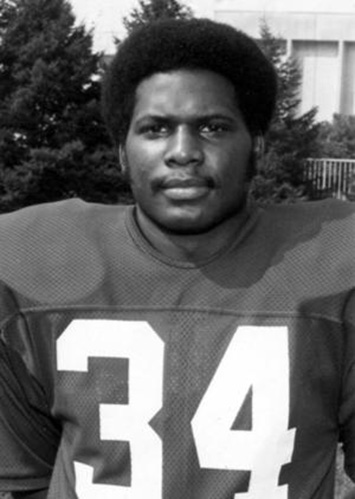Wayne Cummerlander played just three football games during his senior year of high school as a result of a broken ankle, but bounced back from the injury to pursue a fresh start at Otterbein. The Grove City native, who was also a gifted sprinter, would face a sudden reality when he was listed as the eighth-string running back on Otterbein’s initial depth chart in the fall of 1976.
The 5-10, 205-pound Cummerlander embraced the challenge and began moving up the chain, beginning with a memorable JV debut that saw him carry three times for 233 yards and three touchdowns. He had scoring runs of 97, 73 and 63 yards before exiting.That impressive moment carried Wayne into a varsity game the following week, where he eventually entered after an injury to the starter. Cummerlander took his first carry 25 yards to the house and his career as a four-year starter in the backfield commenced.
Wayne evolved into the most dominant running back in the Ohio Athletic Conference, helping lead the 1977 squad to an 8-1 mark and then setting a new Otterbein single-season record with 219 carries as a junior, in 1988. He earned first team All-OAC that fall and among his highlights was a three touchdown, 205-yard performance against Muskingum. Wayne also played in the first college football game broadcasted on cable television, coming in 1977 when Otterbein defeated Marietta, 15-0. Columbus was serving as a test bed for Warner Cable, which was introducing a QUBE experiment for two-way cable TV. Congress even became involved to reach a compromise with ABC, which held exclusive rights to NCAA football at the time.
Cummerlander entered his senior year as a team captain and the OAC’s active career rushing leader but, in an admirable move, volunteered to move to fullback when the Cardinals had nobody else that could physically handle the demands. He carried the ball just a few times per game and instead focused on blocking, where he graded out in the 90-percent range. Wayne’s efforts as a senior landed him on the 1979 Associated Press All-America team, making history as the first black athlete at Otterbein to achieve the status. His career totals of 2,454 rushing yards on 669 carries were both school records at the time, and he was part of a program that posted a 22-12-2 record during the four-year stretch.
A history and secondary education major, Wayne was hired by South-Western City Schools upon graduation after 36 different people wrote letters of recommendation on his behalf. He would go on to a decorated 35-year career in the profession, receiving ‘Teacher of the Year’ three times and winning countless awards during 13 years in the classroom. He then transitioned to serve as a guidance counselor over the following 22 years, including the last 13 at Franklin Heights High School which was in academic emergency. Franklin had just 23 percent of its graduates attending college upon Wayne’s arrival but, by the time of his retirement, 92 percent were continuing their education. He rose the school system’s average cumulative scholarship from $600,000 to approximately $15 million.
Wayne has three children (Lauren, Anthony, Angela) and now resides in Pickerington with his wife, Penne. He will continually be remembered for never doing anything at half-speed on the football field, and for always working hard in his professional career to validate the 36 people that wrote letters of recommendation.


